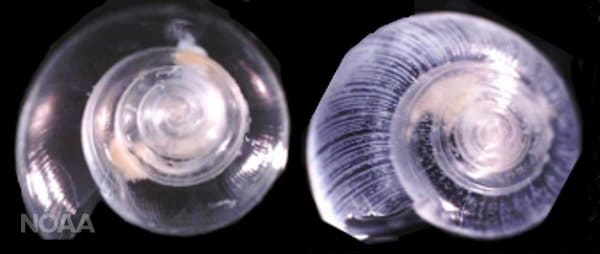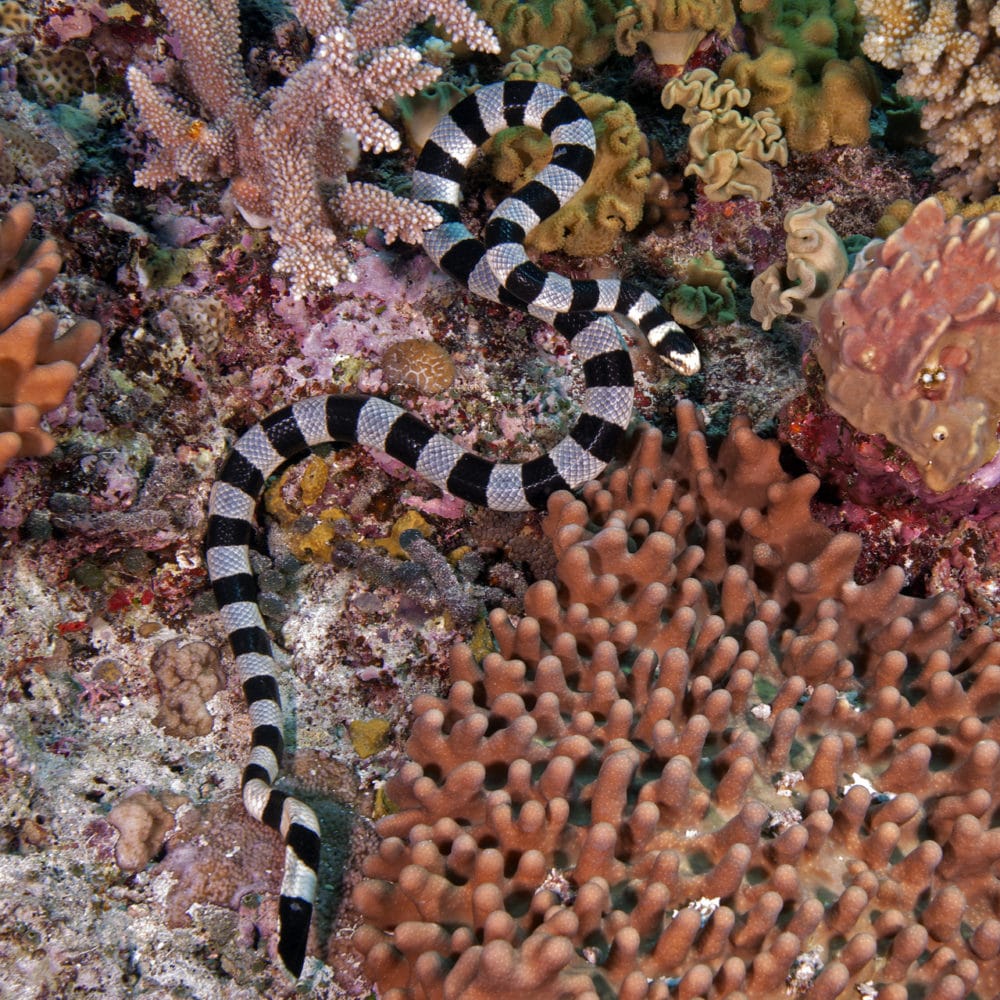Fact Friday

The ocean absorbs much of the excess carbon dioxide produced from the burning of fossil fuels. As the ocean absorbs this rampant increase in CO2, it reacts with sea water, changing the ocean’s chemistry. This process is called ocean acidification, and we are already seeing the negative impacts in our oceans. Here you can see the shell of the pteropod exposed to ocean acidification on the right is weaker and has visible damage, making it harder for the animal to survive.
Image credit: NOAA

February 28, 2025
Banded Sea Krait
Do you know that the banded sea krait contains a neurotoxin in its venom that’s one of the most lethal in the world? Sea snakes spend most of their time in the water. Sea kraits are not true sea snakes because they spend a lot of time on land digesting food and nesting. Sea kraits differ from their cousins on land because they have a paddle-like tail used for swimming. They hunt eels and other small fish that live in the coral reef, easily fitting into the reef’s crevices. They use their deadly neurotoxin to paralyze their victims before swallowing them whole.
Photo Credit: Ken Marks




